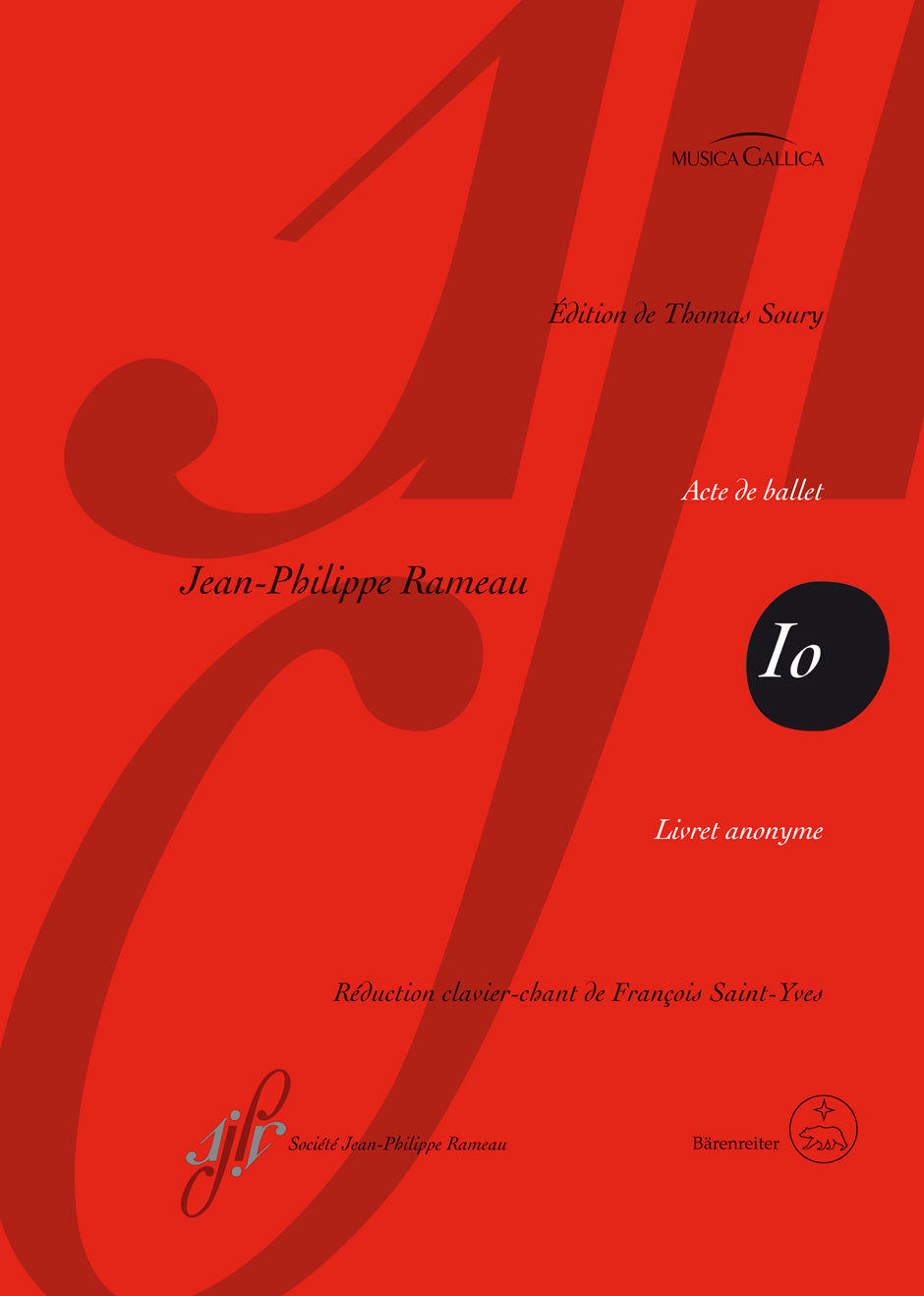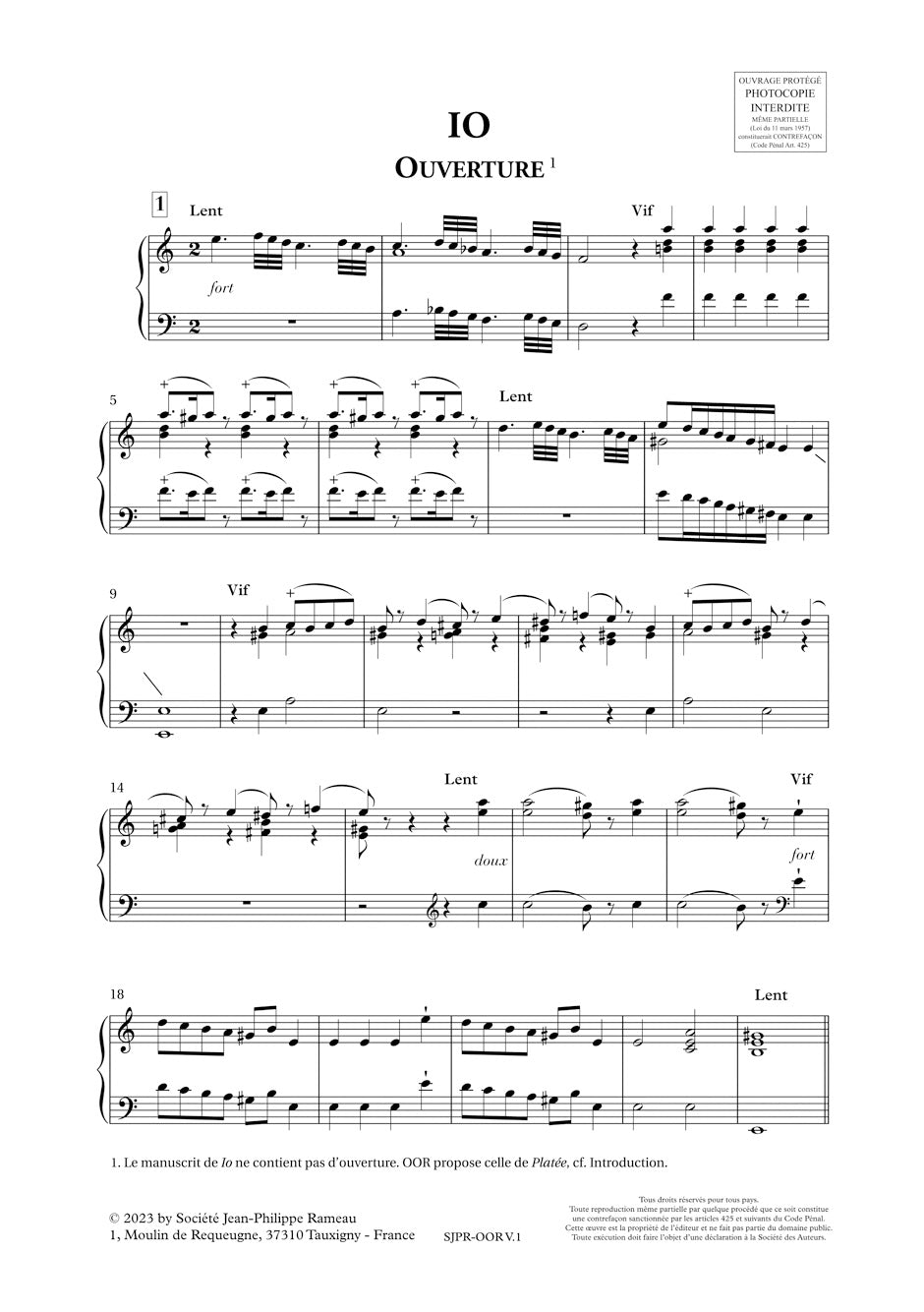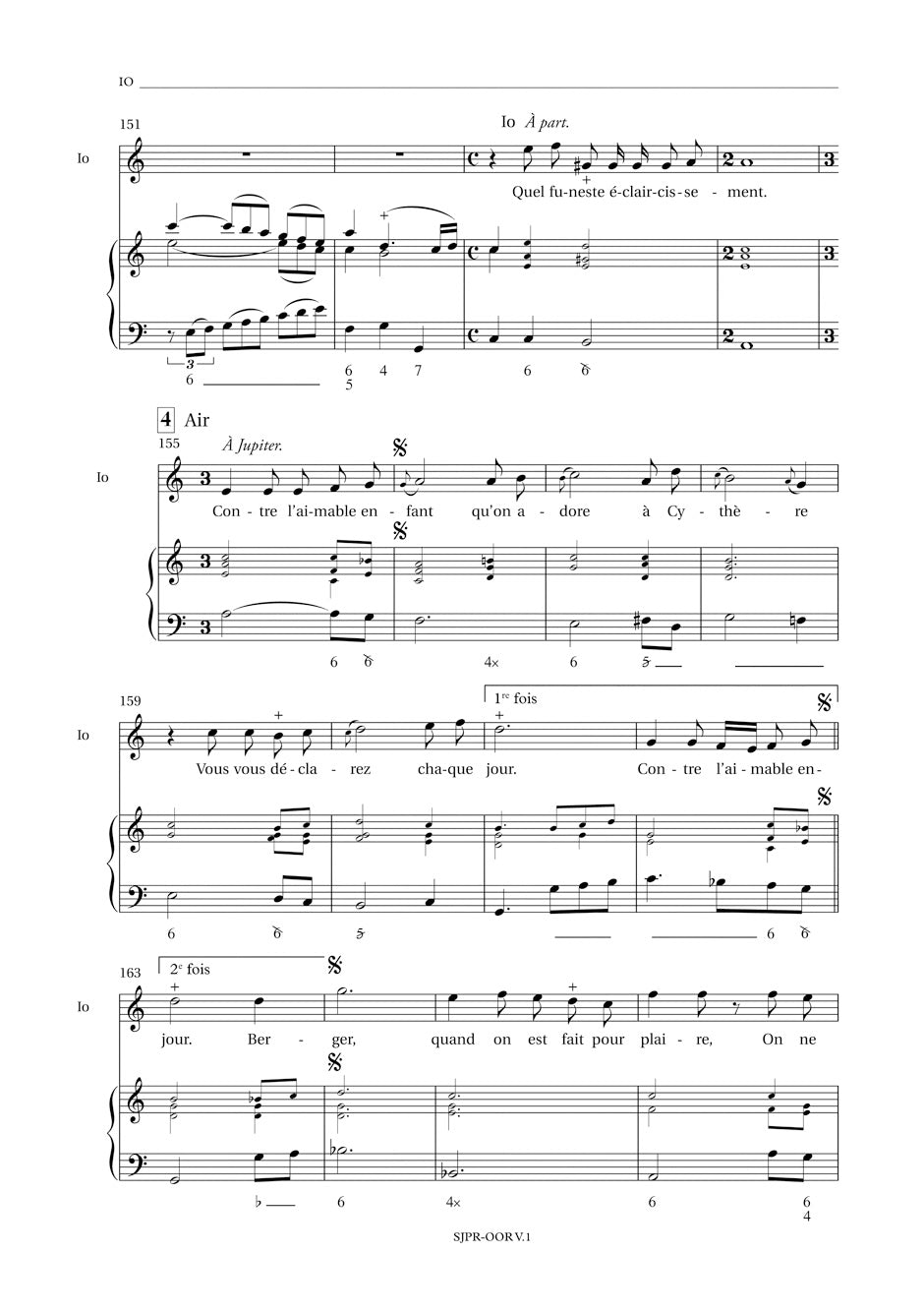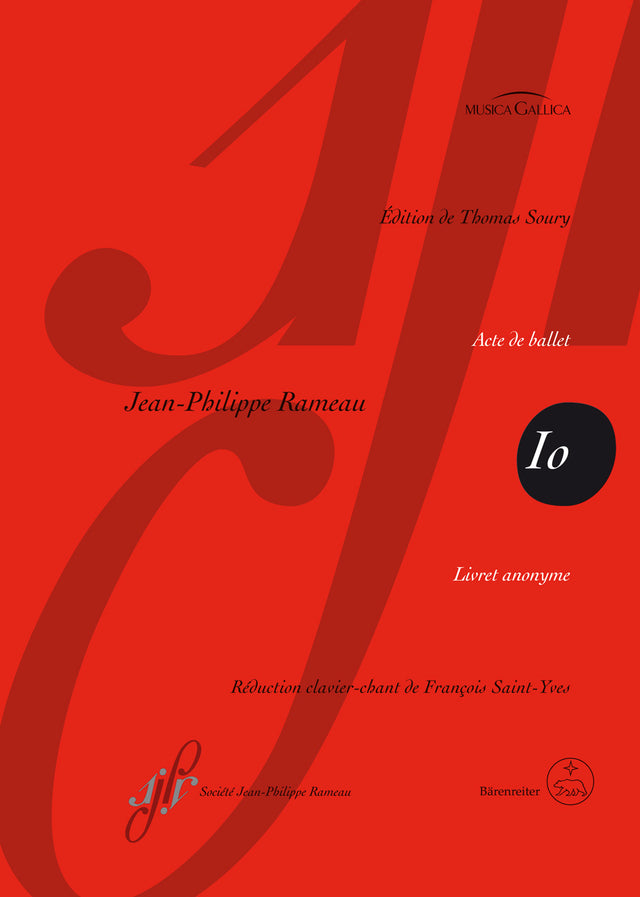Rameau: lo, RCT 45
In stock and typically ships within 1 business day.
- Composer: Jean-Philippe Rameau (1683-1764)
- Format: Vocal Score
- Instrumentation (this edition): Piano Reduction, Voice
- Originally for: Opera
- Work: Io (unfinished), RCT 45
- Work Language: French
- ISMN:
- Size: 7.5 x 10.6 inches
- Pages: 93
Description
In Rameau's operatic oeuvre, "Io" is certainly the work shrouded in the most mystery: the acte de ballet has survived only in the form of a copy of the score and parts which was made by a collector from the generation after Rameau from the autograph that now is lost. Although the copy seems to have been used, presumably for a trial read-through, the work was apparently never regularly performed during Rameau's lifetime. and for good reason: the work breaks off abruptly at the beginning of the divertissement; neither the librettist nor a plan for a theatre location are known. Because of its incompleteness, "Io" was long regarded as Rameau's last work, but there is much to suggest that the composition must have been written between 1740 and 1745. The introduction to this edition examines the references regarding the dating as well as various hypotheses about performance possibilities and librettists.
The plot revolves around one of those typical mythological flirtations that are inevitably to be expected when Jupiter and a nymph, here Io, are involved. with the appearance of madness, La Folia, the work reaches a dramaturgical climax. However after this, the opera breaks off. in order to make the piece performable, the editors of "Opera Omnia Rameau" propose an addition to the divertissement as well as an ending borrowed from the ballet bouffon "Platée" in its 1745 version, which shows numerous parallels to "Io". Thus, these additions come as close as possible to Rameau's style of the 1740s while bringing the plot to a conclusion.
Publishers use a lot of words to describe what they sell, and we know it can be confusing. We've tried to be as clear as possible to make sure you get exactly what you are looking for. Below are descriptions of the terms that we use to describe the various formats that music often comes in.
Choral Score
A score for vocalists that only contains the vocal lines. The instrumental parts are not there for reference. Generally, cheaper than a vocal score and requires multiple copies for purchase.
Facsimile
Reproductions of the original hand-written scores from the composer.
Full Score
For ensemble music, this indicates that the edition contains all parts on a single system (there are not separate parts for each player). In larger ensembles, this is for the conductor.
Hardcover
Hardbound. Generally either linen-covered or half-leather.
Orchestral Parts
Similar to a wind set, this is a collection of parts. In the case of strings, the numbers listed are the number of copies included, though generally these are available individually (often with minimum quantities required).
Paperback
When publishers offer multiple bindings (e.g. hardcover) or study scores, this is the "standard" version. If you're planning to play the music, this is probably what you want.
Performance / Playing Score
A score of the music containing all parts on one system, intended for players to share. There are not separate parts for each player.
Set of Parts
For ensemble music, this indicates that there are separate individual parts for each player.
Solo Part with Piano Reduction
For solo pieces with orchestra, this is a version that contains a piano reduction of the orchestra parts. For piano pieces, two copies are typically needed for performance.
Study Score
A small (think choral size) copy of the complete score meant for studying, and not playing. They make great add-ons when learning concertos and small chamber works.
Vocal Score
A score prepared for vocalists that includes the piano/organ part or a reduction of the instrumental parts.
Wind Set
For orchestral music, this is a collection of wind and percussion parts. The specific quantities of each instrument are notated.
With Audio
In addition to the printed music, the edition contains recordings of the pieces. This may be an included CD, or access to files on the internet.
With / Without Fingering (Markings)
Some publishers prepare two copies - a pure Urtext edition that includes no fingering (or bowing) suggestions and a lightly edited version that includes a minimal number of editorial markings.





